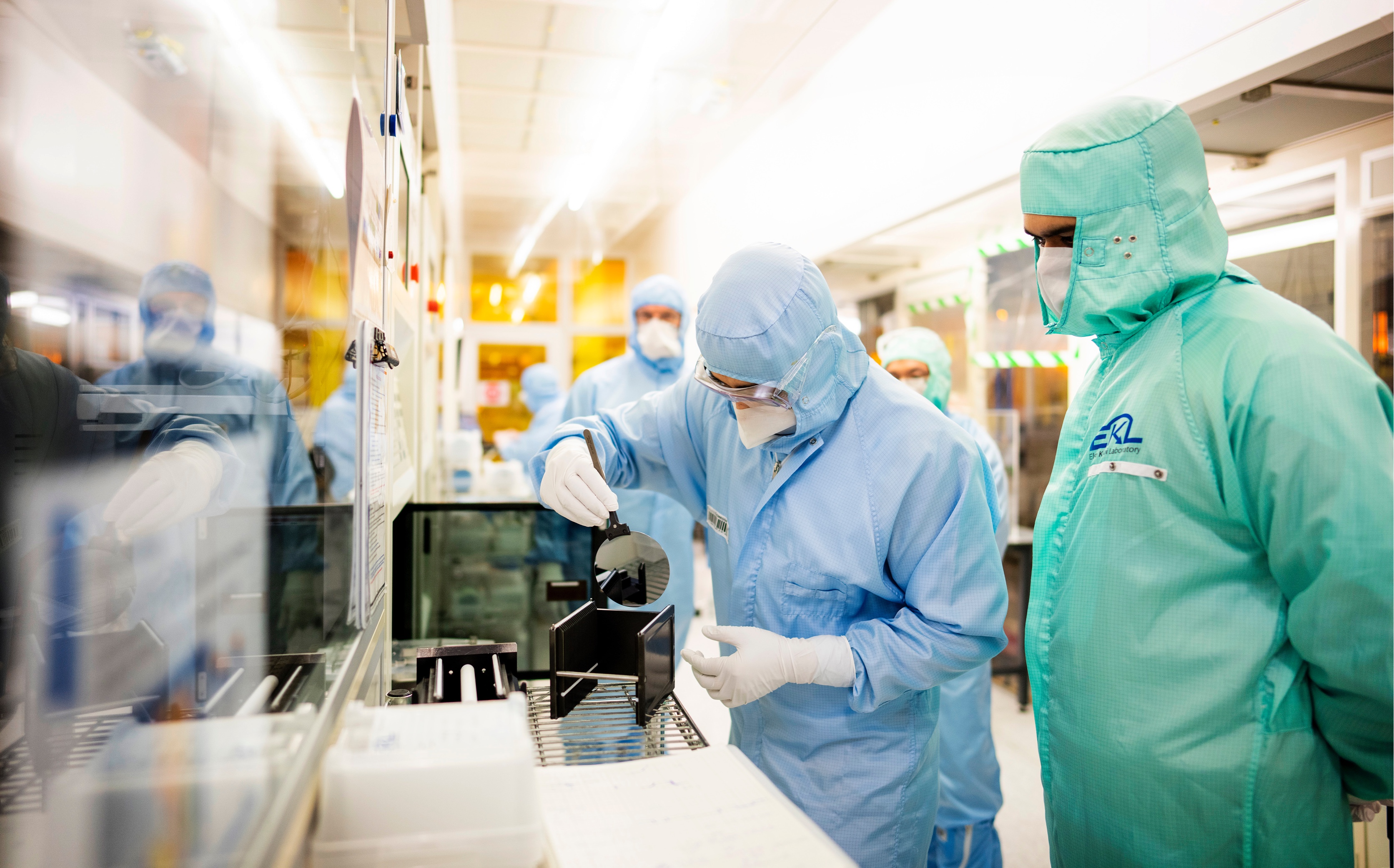Qubit
research
Next generation of qubits for quantum computing
The number one quantum computing challenge is that qubits (the basic units in quantum computers) are extremely fragile. Qubits are easily influenced by many things, like light and temperature. Quantum decoherence is what happens as a quantum system gradually loses its special quantum behaviour over time.
To overcome this challenge, we study new types of qubits that are by design protected from outside influences. These new qubits are referred to as ‘protected qubits’ and have the potential to outperform established technologies. We aim to understand, develop, and demonstrate protected qubits. In our efforts we combine material science, quantum theory, and novel device design.
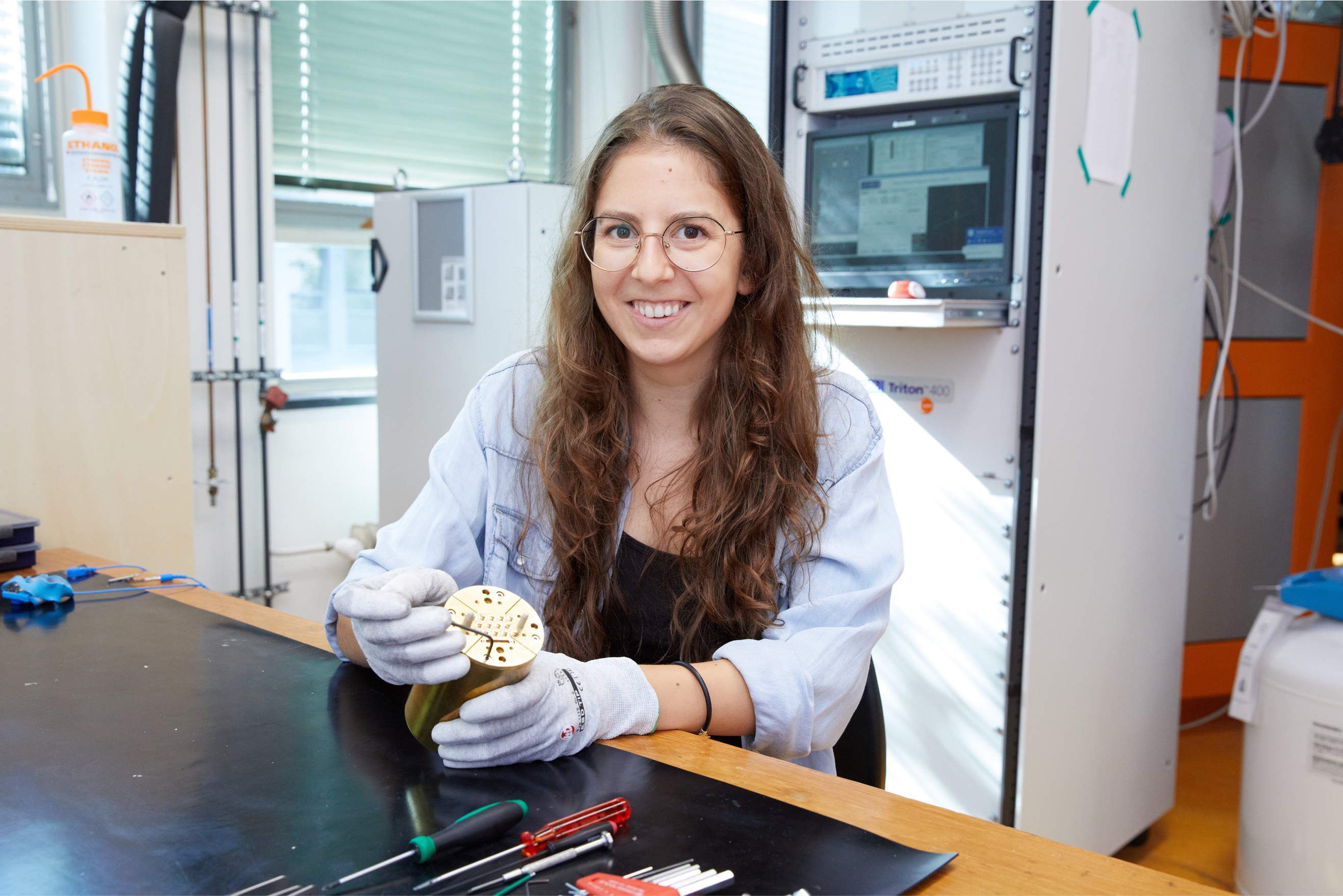
New avenues for Majorana qubits
Long-term goal:
To develop a platform for topologically protected qubits with long coherence times and fault-tolerant quantum operations.
Highlights
Using quantum dot superconductor hybrids in nanowires we demonstrated singlet and triplet Cooper pair splitting (Nature) and achieved strong interactions between the dots to create a minimal Kitaev chain with unpaired Majorana zero modes (Nature).
We showed theoretically (Phys. Rev. Lett.) and experimentally (arXiv) how the interactions between the sites of the Kitaev chain can be controlled via Andreev bound states.
Using two-dimensional electron gases we demonstrated the feasibility of creating Kitaev chains on a scalable and flexible platform (arXiv) and developed methods for fast gate sensing of double-dot devices relevant for readout of Majorana-based quantum bits.
In our previous Annual Report, we described that a paper on the supposed observation of a quantized Majorana conductance was retracted. The TU Delft Research Integrity Committee (CWI) launched an investigation, and this procedure was finalized in 2022.
In short, in the 2018 Nature article ‘Quantized Majorana conductance’, the first author involved, Dr Hao Zhang, and corresponding author, Professor Leo Kouwenhoven, were partly negligent and partly culpably negligent. There was no violation of scientific integrity. This is the judgement of the Executive Board of TU Delft, based on recommendations of the TU Delft CWI, supported by external experts, and advice of the Netherlands Board on Research Integrity (LOWI).
The authors of the paper “Epitaxy of advanced nanowire quantum devices” published in Nature in 2017 have decided to retract this paper as well. TU Delft has announced that a second investigation has been launched surrounding publications on Majorana particles from QuTech from before 2019.
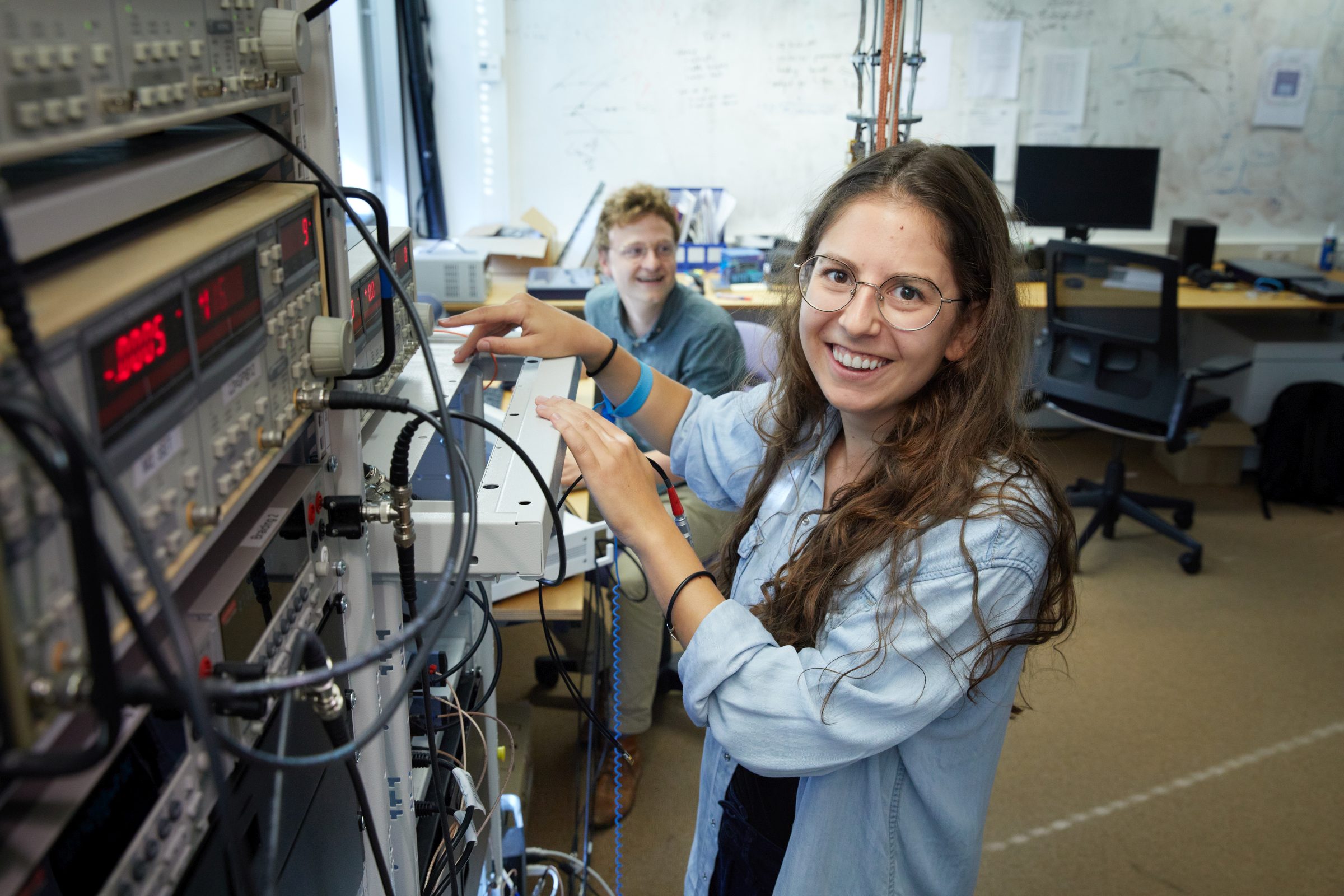
Novel superconducting and hybrid qubit architectures
Long-term goal:
To develop new qubits based on superconducting circuits with intrinsic protection against noise and with gate fidelities outperforming conventional qubit architectures.
Highlights
Using a nanowire transmon, hosting a quantum dot inside the Josephson junction of the transmon, we studied how the spin-orbit coupling allows for direct driving of the spin transition of the quantum dot (arXiv). Moreover, we implemented a novel Andreev spin qubit in the same platform with improved stability and faster operations compared to the only previous implementation of Andreev spin qubits (arXiv).
With a hybrid nanowire embedded into a superconducting resonator, we showed that the kinetic inductance of the nanowire can be controlled by a voltage gate (Phys. Rev. Applied). The architecture that we now understand well could in the future be an excellent platform for magnetic-field-compatible voltage-controlled quantum electronics.
We showed that a low gap superconductor can be used to mitigate qubit loss imposed by quasiparticles being excited by phonons created by high-energy radiation (Phys. Rev. Applied). This work demostrates a path forward to mitigate quasiparticle loss for superconducting qubits as well as topological qubits.
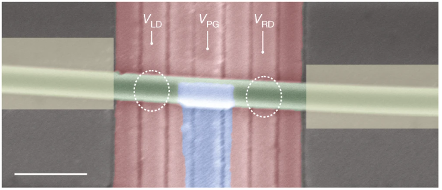
SEM image of a nanowire-based quantum dot-superconductor hybrid device to realize Kitaev chains
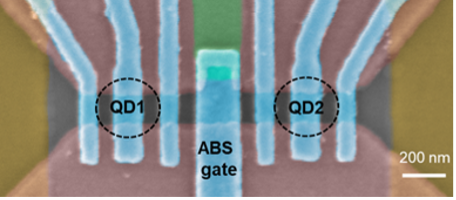
SEM image of a 2DEG-based quantum dot-superconductor hybrid device to realize Kitaev chains
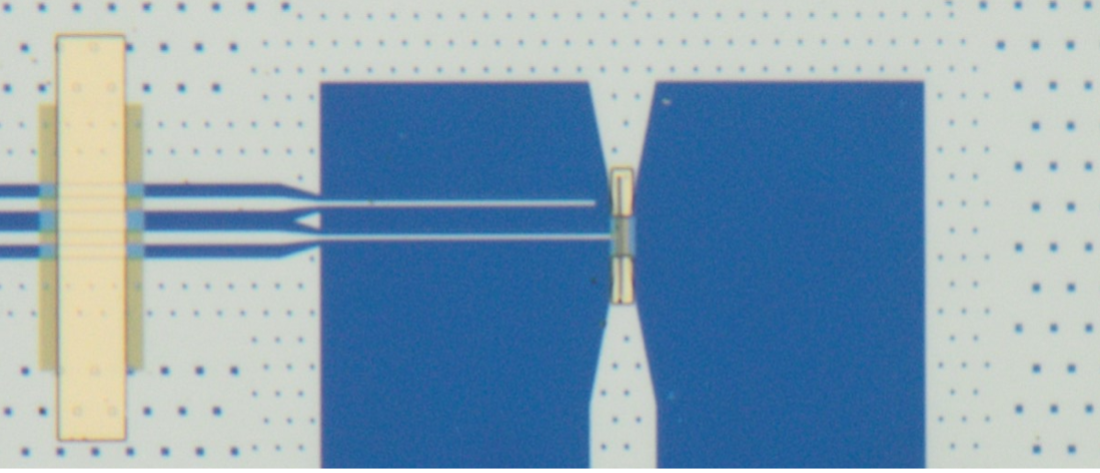
Optical micrograph of a nanowire integrated into a superconducting resonator
